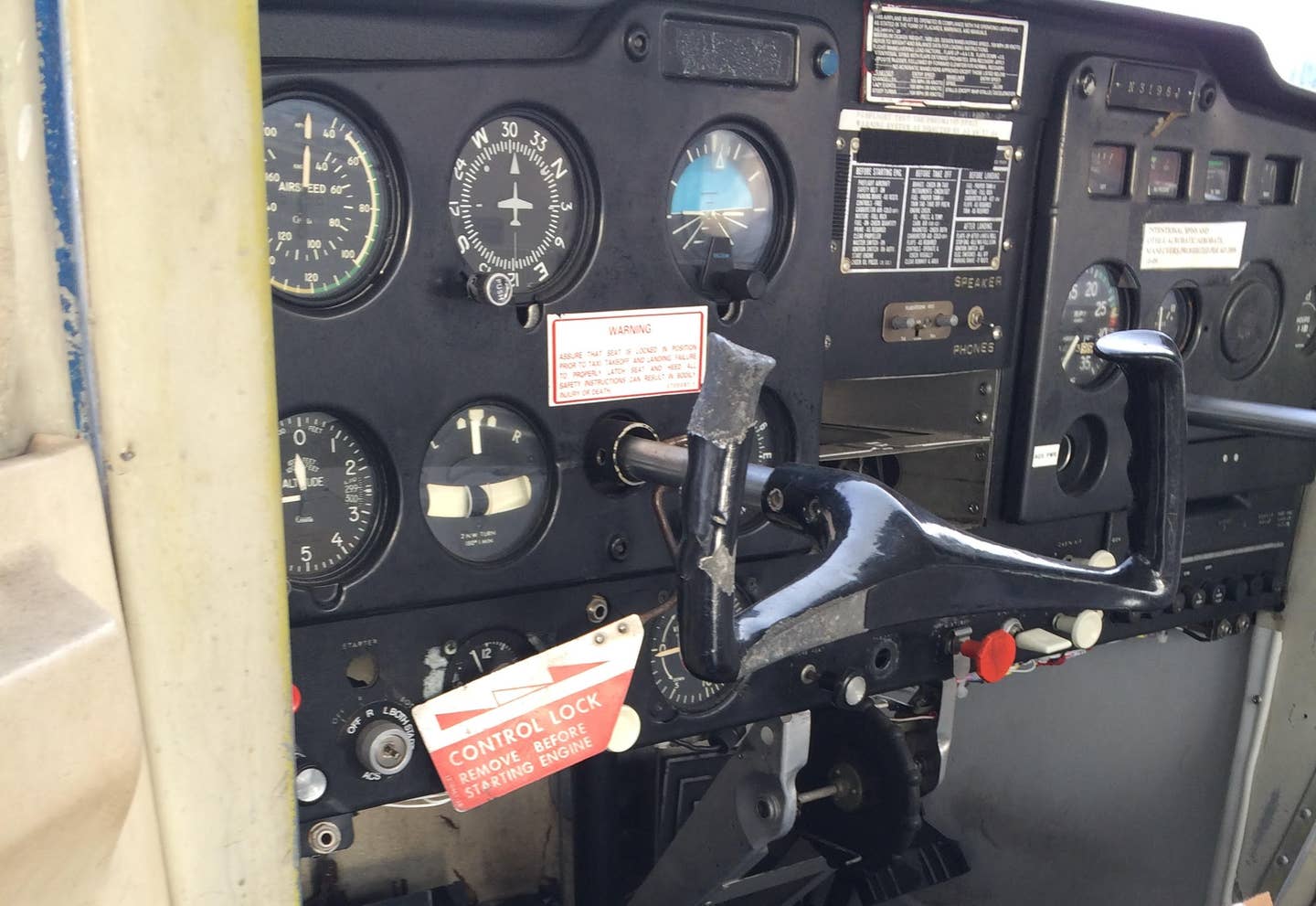Take Ownership of Your Training
Commit to always seeking knowledge because learning shouldn’t end after the check ride.

One of the lessons a CFI imparts on the learner is the importance of always seeking knowledge to become a better pilot. [Credit: Shutterstock]
"Show me, don't tell me." This phrase was a favorite of a college journalism professor of mine. Metaphorically speaking, he beat us over the head with this phrase.
I found it useful when I embarked on a flight instructing career as well. I learned very early that if I tell my learners the answers to questions about the aircraft or systems, they were likely to forget it. But if helped them find the proper resource that could provide the answer, they were more likely to recall it.
Sometimes it became a game in ground school as they raced to find the information in their FAR/AIM (Federal Aviation Regulations/Aeronautical Information Manual) or POH (pilot operating handbook). When it was located, the first person to find it would proudly read it outloud, and the entire class would respond, "Learning has taken place!"
One of the lessons a CFI imparts on the learner is the importance of always seeking knowledge to become a better pilot. Learning shouldn't end after the check ride. This can be very challenging if the learner is beyond traditional school age. Going back to school as an adult—the median age of flight students tends to be in the early 30s—can be very intimidating, even in flight school. They have to want it.
If a person doesn't have the initiative to seek information, their CFI may question whether they really want to be a pilot. This is particularly true of teenage learners, who may have been pushed into aviation by a parent who thinks that their child is a genius—or at least above average—and a born pilot. The CFI gets the hours, and in the worst case scenario, becomes a glorified babysitter. And in the best case, the CFI brings another aviator into the fold.
The internet has made it ridiculously easy to get information. Drop the question into a search engine and you get an answer. Many flight schools also have a FAQ (frequently asked questions) page on the websites as well, with details on the types of aircraft to be flown as well as approximate costs. Because of this convenience, it is relatively easy to become educated, not like it was decades ago when information acquisition was a much more involved process, you might say, (pauses dramatically) it was an adventure.
(Cue theme from "Raiders of the Lost Ark.")
Decades ago when you wanted information you made the pilgrimage to a building called a library. You had to hike there, uphill both ways, 10 miles through snow drifts, and fighting off dragon attacks to get the information you sought. Once inside, you crouched before large wooden cabinets known as card catalogs, thumbing through them, risking paper cuts while you struggled to decipher the foreign language known as the Dewey Decimal System, which led you into the rows and rows of bookshelves in hopes of finding a tome containing the information you sought.
Once this information was located in the card catalog you had to write it down on a piece of paper using a pen or (gasp) a pencil. Armed with this information, you moved quickly and quietly (libraries encouraged stealth skills) through stacks of books looking for your quarry. If you were lucky, the book was there. If not, well, at least you were in the right section—and there were often other books on the subject. (Sighs) I must admit I miss the sport of looking for information this way.
Look it Up, Don't Make it Up
There's an awful lot to remember as a pilot. One of the words of advice given to learners before checkrides is if you don't know the answer, look it up. Don't try to BS the examiner. CFIs need to embrace this as well. A CFI who doesn't know the answer or isn't sure of the answer models good behavior when he or she reaches for the appropriate reference material to find the answer.
Every Flight Counts
Remember FAR 91.103: "the pilot shall be aware of all available information prior to the flight." This means getting a weather briefing, computing aircraft weight and balance, checking NOTAMs, verifying TOMATO FLAMES or other preflight acronyms, and determining aircraft performance, using a checklist during preflight—and the other parts of the flight—are key. Does it take time to do these things? Yes. Should you do these things every time? Yes.
Sometimes, getting all this information can be a bit like an Easter egg hunt, especially the NOTAM search. You find yourself wondering why there is a NOTAM for a construction crane 145 feet AGL some six miles from the airport, because seriously, if the airplane is that low that far from the airport, the pilot is having serious issues. You will learn what is relevant for your mission. Pro tip: always check the NOTAMs for nearby airports. If your airport is unexpectedly closed during your flight—like because of an accident—you will have a better idea of where to go or where not to go.
Know the Numbers for Your Airplane
Performance calculation is a skill that sometimes gets pushed to the end of a person's training, especially if no syllabus is used and the CFI tells the learner it is a skill not used until cross-country flying.
I beg to differ—performance should be taught and calculated before every flight. How will that freshly soloed learner know what is normal for aircraft performance on a particular day if they have not crunched the numbers, to say nothing of the challenges they will have on their knowledge test if they don't know how to read a performance chart? It can be fun to have the learner calculate takeoff and landing distances both solo and with the CFI onboard, then fly them to see how close they got the math.
Avoid the Just Factor
With an increase in experience comes an increase in confidence. Confidence can breed complacency, or the "just" factor:
- I don't need to do weight and balance, because it's just me in the aircraft.
- I don't need to calculate the takeoff distance, because it's just me in the aircraft.
- I don't need to check NOTAMs, because we're just going to the practice area.
Don't be this pilot.
If the CFI doesn't check the NOTAMs or calculate aircraft performance before each flight there's a good chance their learners won't either—even after they become CFIs. It's just a flight lesson. It's just a flight to the practice area.
Make Learning Take Place
It's okay to ask your CFI why you are learning this task or information, especially if you don't understand the application during flight. He or she should have a cogent answer: "We're practicing slow flight to help you develop mastery of control of the aircraft at slow speeds," or "We're practicing slips so that you can learn to land without flaps," or "We're going to practice takeoffs and landings to improve your pattern work in preparation for solo."
It's also okay to ask your CFI for more practice, especially when it comes to reviewing something already learned. The best learning comes from the building block approach and the good CFIs will be able to tie the lessons together, but remember, it is up to you to take ownership of your training, and make learning a life-long habit.

Subscribe to Our Newsletter
Get the latest FLYING stories delivered directly to your inbox






